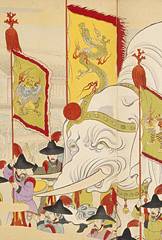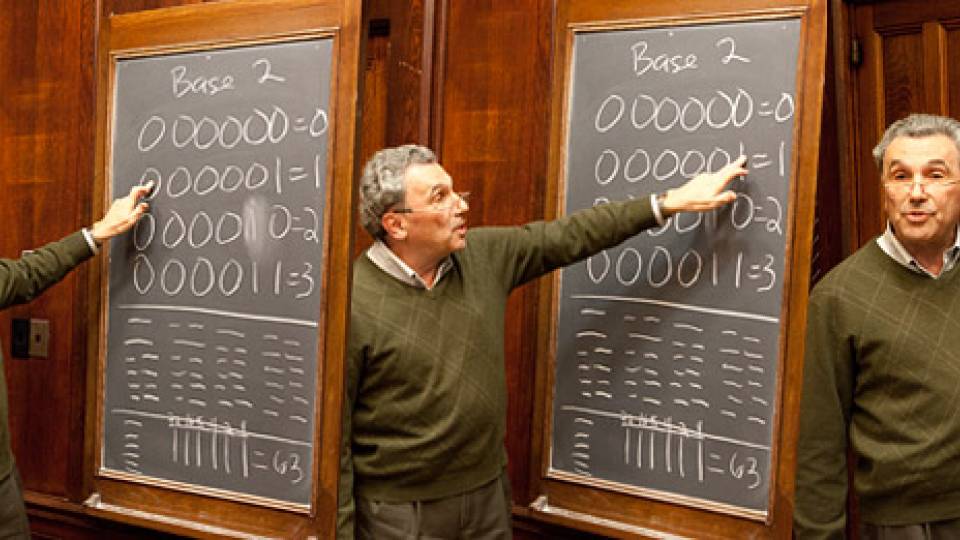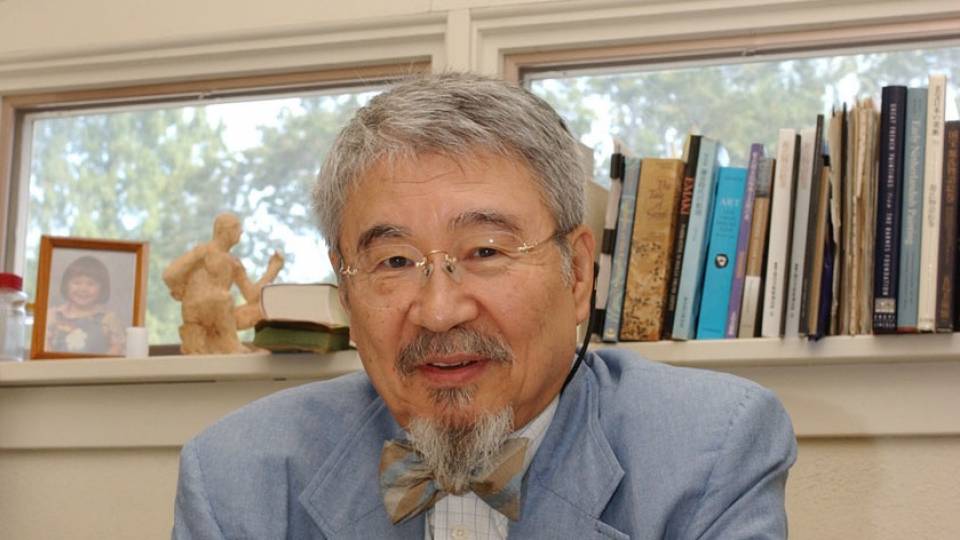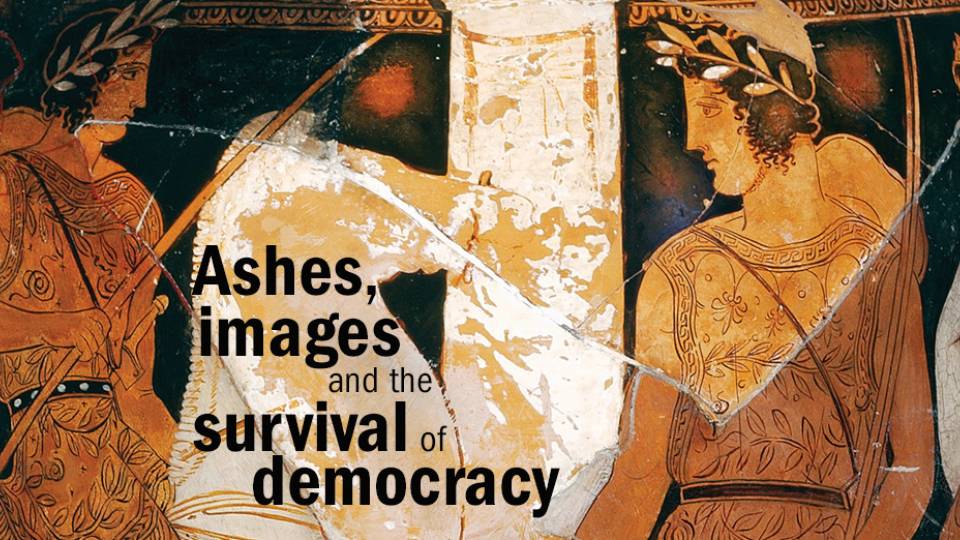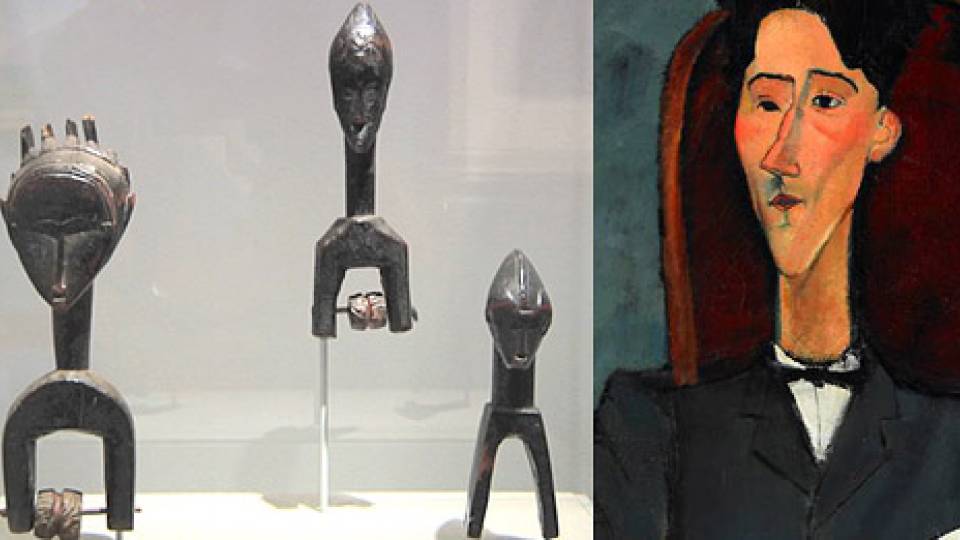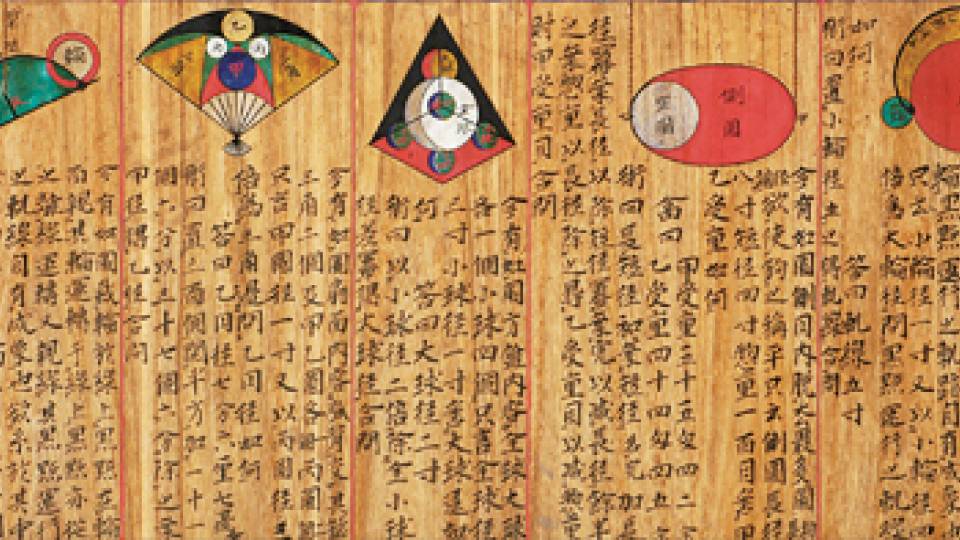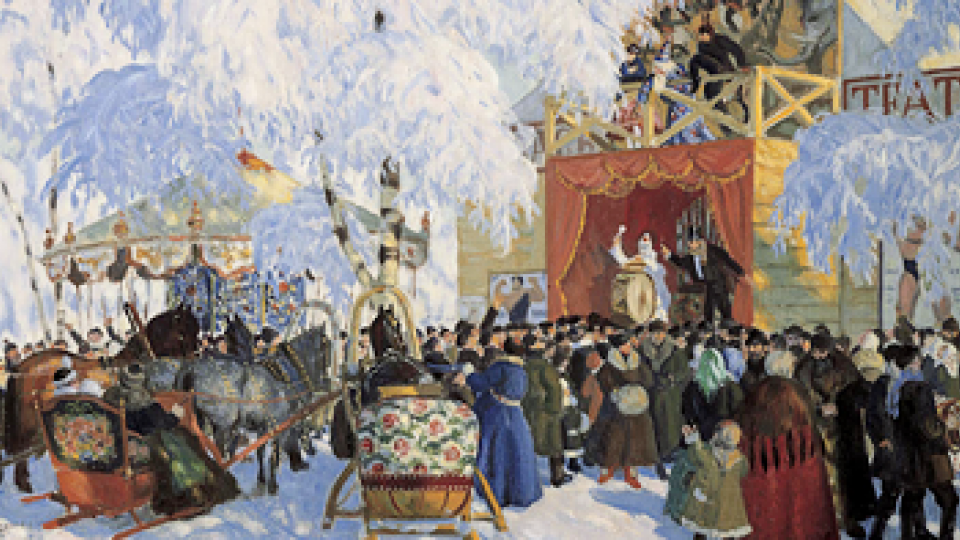"Japanese Views of East and West: Imprinting the Other in Meiji Eyes," an exhibition of color woodblock prints focusing on the country's perceptions of other cultures, will be on view at the University Art Museum through Jan. 7.
The selection of works in the exhibition focuses on the sharp transition in Japanese political, social and philosophical thought from the 1860s to the beginning of the 20th century -- ranging from a kabuki play scene set in the North American "Wild West" to a panoramic view of an offshore battle with Russia.
The exhibition opens with images produced in the final days of the era of military rule under the Tokugawa shogunate. As the unequal nature of trade agreements signed with Western nations in the 1850s drew the ire of many Japanese, a new category of prints that aimed both to demystify the customs of the foreigners and provide intriguing foreign images flourished briefly in the early 1860s.
When imperial power was restored in the Meiji period (1868-1912), Japanese interaction with other cultures intensified, and a series of images in the exhibition documents the ways in which print artists reflected the dramatic changes in Japanese perceptions of foreign cultures. Two prints by Toyohara Chikanobu address different aspects of this shift. One, titled "Nobility Taking in the Cool Night Air," shows the imperial family experimenting with Western dress as their "costume of state." Another print depicts a traditional performance at an annual shrine festival, in which Japanese commoners masquerade as a delegation from Korea before the shogunate -- providing commentary on the power of costume to express cultural mores and political leanings.
The exhibition also includes a selection of prints issued around 1890 by Japan's Ministry of Education as part of its strategy to Westernize Japanese society. Among them is a group of prints, titled "Biographies of Great Persons of the West," which provide a short text outlining the self-reliance and diligence of an inventor or businessman from the United States, France or Britain, as well as a scene depicting a pivotal moment in the life of the subject.
The ominous aspect of Japan's foreign relations during the Meiji period is explored in depictions of the Sino-Japanese war by Kobayashi Toshimitsu and of the Russo-Japanese war by Ogata Gekko and his student Okura Koto. Koto's representation of the 1904 battle of Port Arthur is at once modern in its use of Western perspective and thoroughly traditional in its incorporation of centuries-old battle scene motifs from Japanese handscrolls.
For more information on the "Japanese Views of East and West" and other exhibitions, visit the University Art Museum's Web site.
